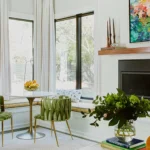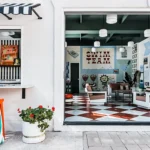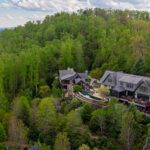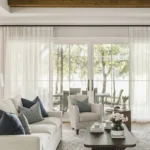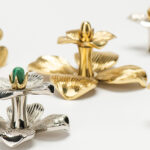Bees, please
May 29, 2024

Create a pollinator buffet in your backyard.
words and photographs by Jay Sifford
“Where are the butterflies, bees and hummingbirds? It seems like there used to be many more.” It’s a sentiment that I hear more than I’d like. While habitat destruction and infill construction have certainly taken their toll on pollinators, the good news is that we can reverse this trend. With a bit of forward thinking and planning, average homeowners can create pollinator buffets that seamlessly blend into typical home landscaping. Putting popular dogma aside, a blend of native and non-native plants will both feed pollinators and create beauty for us to enjoy.
LATE WINTER
In creating this pollinator buffet, it helps to think seasonally. Have you taken a walk on an uncharacteristically warm February day and noticed some awakening bees out searching for food? We can do them a huge favor by planting winter-blooming shrubs and perennials. Native witch hazels bloom late fall into early winter, but many of the readily available hybrids bloom in late winter. Hellebores, commonly known as Lenten roses, and edgeworthias, also called the Chinese paper bush, bloom mid- to late winter and provide food for early foraging bees. Even crocus and daffodils, bulbs I remember from my childhood, are excellent food sources for bees on those warm late winter days. Squirrels also enjoy crocus bulbs, so soaking them in a natural repellent prior to planting is advised. Lastly, spirea is a readily available shrub that blooms in very late winter and early spring.
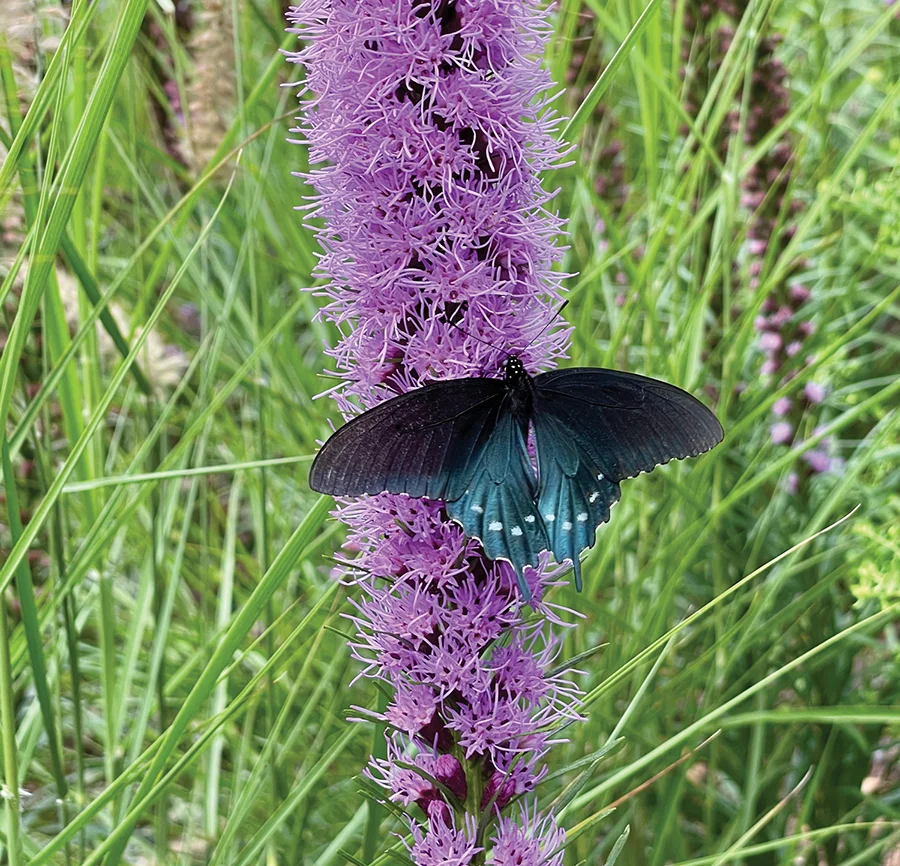
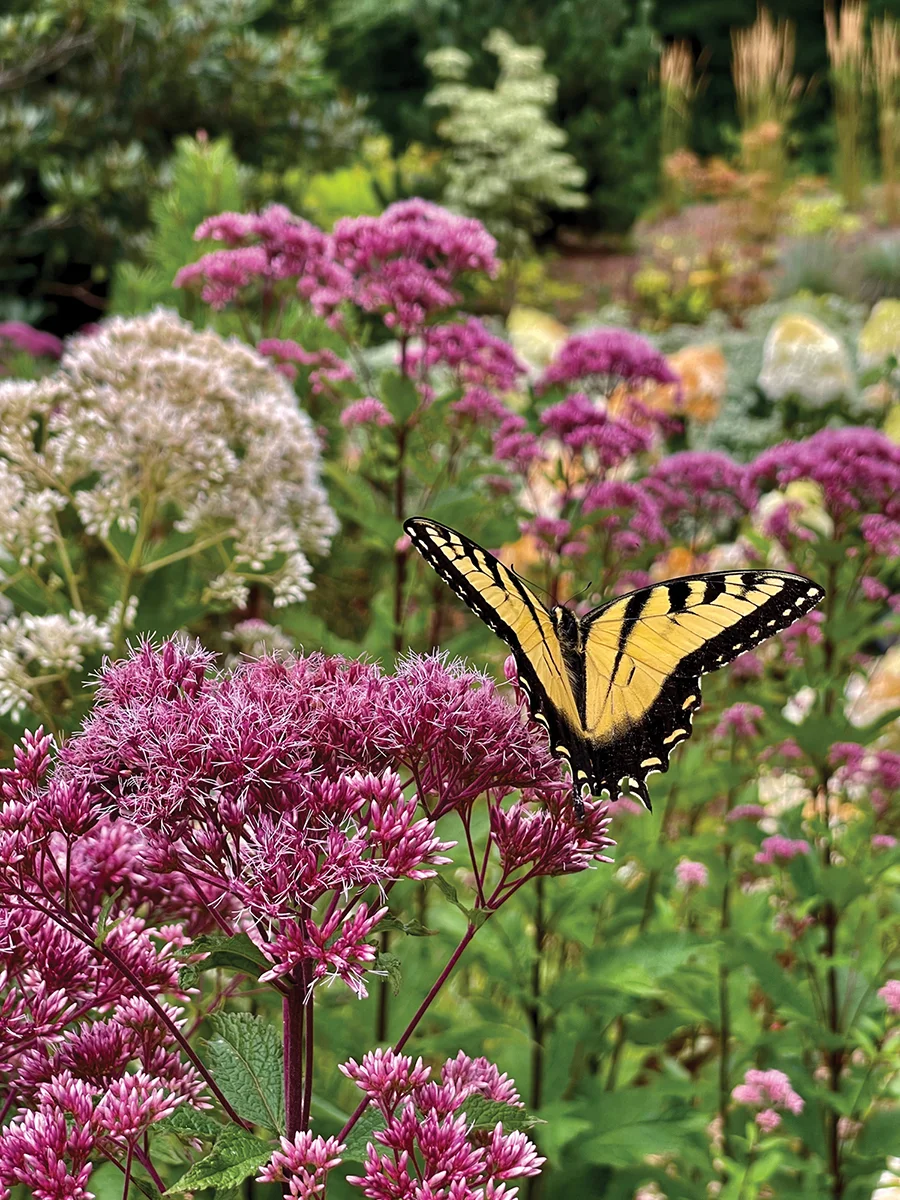
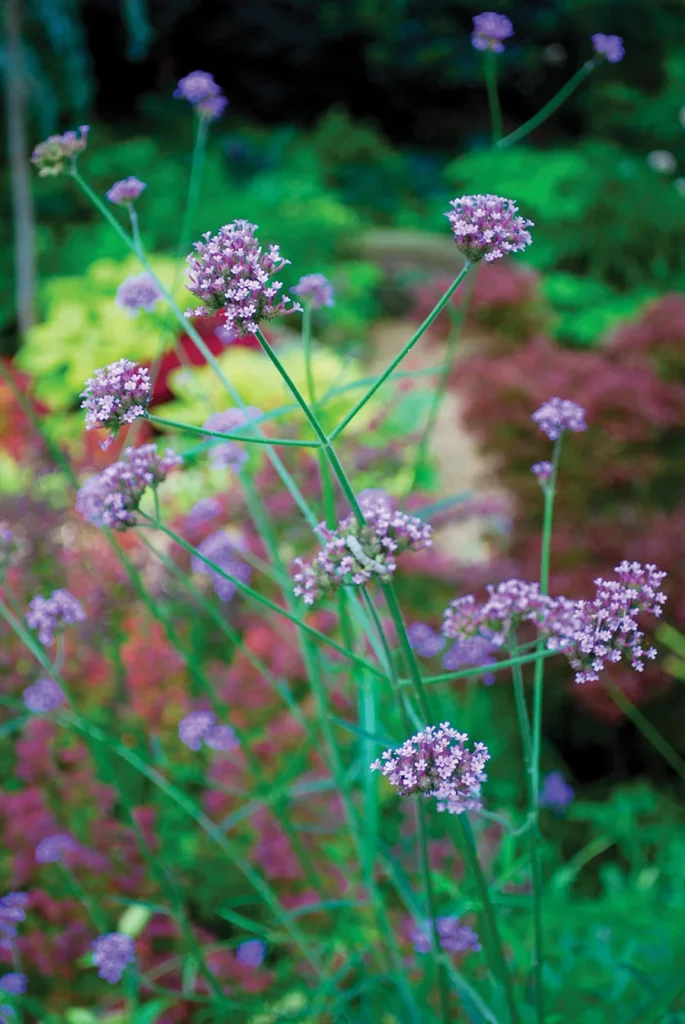
Left – Right: Liatris spicata, A butterfly on Joe Pye blooms, Verbena bonariensis
EARLY SPRING
When warmer weather arrives, we head out, and so do the pollinators. Butterflies and hummingbirds travel north from their winter homes. The spring garden is animated with their frolicking. Fortunately, a variety of plants meet the challenge head-on. Baptisia, a larger mounding native, puts forth lupine-like spires of generally blue to purple flowers. Salvias in tones of blue, purple and pink begin their show. The taller ‘Black and Blue’ salvia is especially attractive to hummingbirds. Alliums, with their spherical heads of hundreds of tiny flowers, add whimsy and punctuation to the spring garden. And native tickseed or coreopsis begins to bloom, most commonly in shades of yellow.
SPRING
By early May, an entirely new pollinator menu comes online. Gaura, or wandflower, is native to the lower South and is quite attractive to bees and butterflies. Penstemon, another native, pushes spikes of white or pink flowers toward the sky in a celebratory manner. Certain cultivars of penstemon sport burgundy foliage, an added bonus. Russian sage, monarda, catmint and veronicas begin to bloom. Carolina allspice, known botanically as Calycanthus, is a shrub that sports burgundy flowers in late spring. The pink tubular flowers of weigela attract hummingbirds. However, the plant that I anxiously await is Verbena bonariensis, also known as tall verbena. This tall, wiry perennial sports 2-inch, button-shaped heads of light purple flowers from May until frost. It is hands down my favorite perennial. It attracts butterflies, bees, hummingbirds and, if you let it go to seed (which I would), it will attract flocks of gold finches. If happy, it does seed around the garden, but it’s easy to remove where you don’t want it.

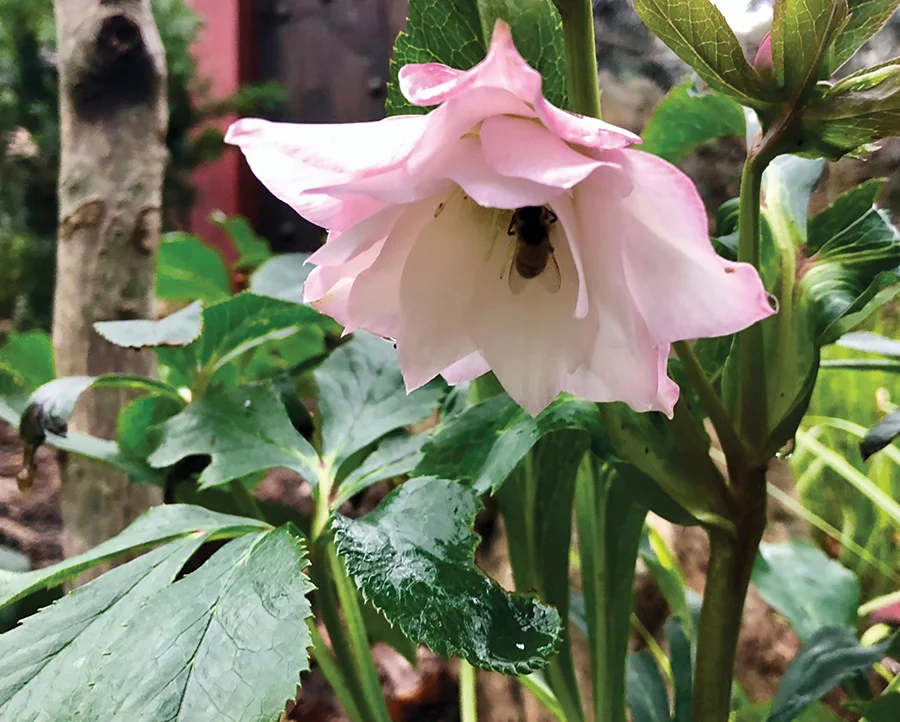
Left – Right: Black-eyed Susans and Hellebore
SUMMER
Summer brings a new course of flowering shrubs and perennials to the table. Coneflowers, or echinacea, is a native that naturally blooms pink but is available in cultivars ranging from white to yellow to orange. Be aware that some of the newer “double coneflowers” are generally useless to pollinators as they are difficult to extract pollen from. Echinacea also provides a food source in the way of seed for birds after the weather turns cold.
To me, native Liatris spicata, or Blazing Star, is truly the star of the summer garden. Three-foot-tall spikes of purple or sometimes white flowers put on a monthlong show. Pollinators absolutely love this perennial. Plant it in mass for a dazzling display, accentuated if the flowers are backlit by the morning or afternoon sun. I also use it for rhythm and punctuation throughout the garden due to its extremely vertical habit. Liatris seeds freely, so it’s not for the tentative gardener.
Agastache, or giant hyssop, is a summer pollinator staple. Historically in shades of blue, cultivars are now available in everything from raspberry to tangerine-orange. Black-eyed Susans, also called rudbeckia, are both showy and good food sources.
The one native perennial that probably attracts the most bees is mountain mint. A mass planting of pycnanthemum muticum, its botanical name, literally undulates with bee activity in late summer. At this same time, the Joe Pye begins to bloom. This tall to very tall native perennial is the host for the swallowtail butterfly. It generally blooms in softer shades of pink, though white varieties are available. Interestingly enough, I’ve never seen pollinators on the white varieties. Both of these plants can be a bit thuggish and need corralling on occasion.
Not to be outdone by summer-blooming perennials, clethra, a shrub also known as summersweet, begins to bloom with the most wonderful fragrance. Itea, or sweetspire, also puts on a show in shades of white. An interesting but little-known fact is that evergreen conifers, particularly cedars and spruces, harbor harmless mites that are a protein source for hummingbirds. Hummingbirds need some protein for a healthy diet.
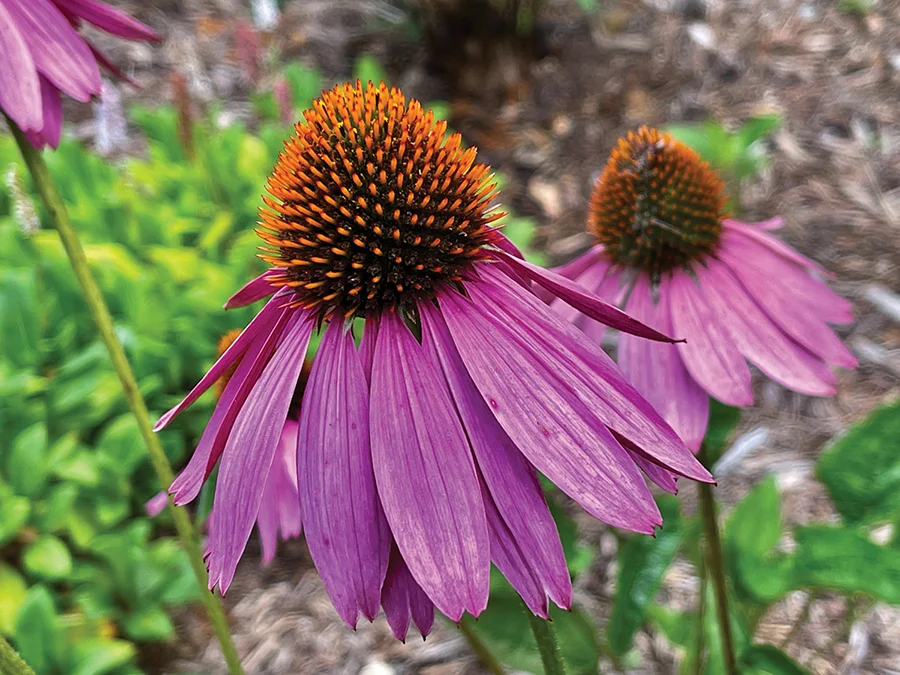
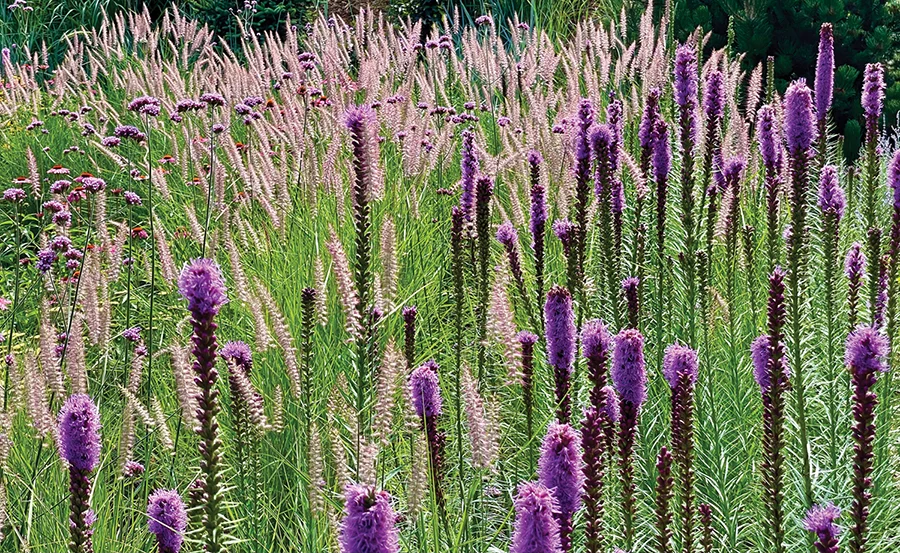
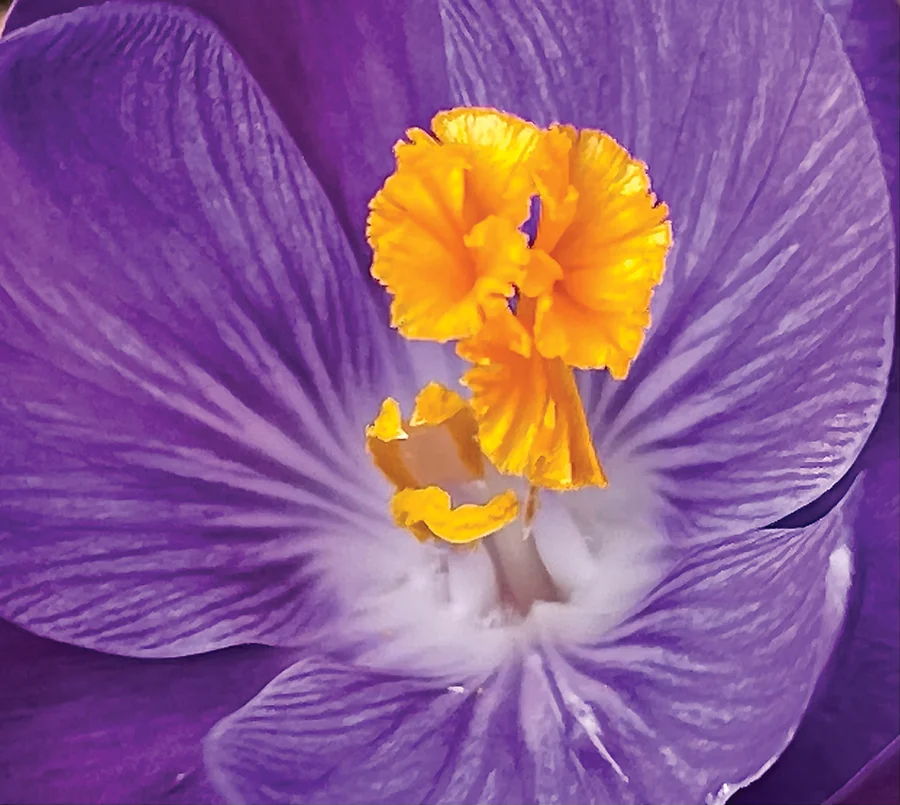
Left – Right: Echinacea, Liatris spicata, Crocus
FALL
Nothing is lost when moving into fall. In autumn, we experience the beauty of ironweed (Vernonia), goldenrod (Solidago), bluebeard (Caryopteris) sedums, and asters. These plants provide one last smorgasbord of food for soon-to-migrate or hibernate pollinators. Solidago is frequently maligned as a fall allergen, but the culprit is in fact ragweed, not goldenrod, so plant without guilt.
I believe that gardens by definition are stylized versions of nature, designed to appeal to our minds. But the good news is that diverse gardens incorporating some of the plants highlighted here also allow wildlife to become the willing beneficiaries of our efforts. That is both a privilege and a responsibility. SP
Jay Sifford is a Charlotte-based landscape designer. His work has been featured in Southern Living, Country Gardens and Fine Gardening, as well as Houzz and several books.
